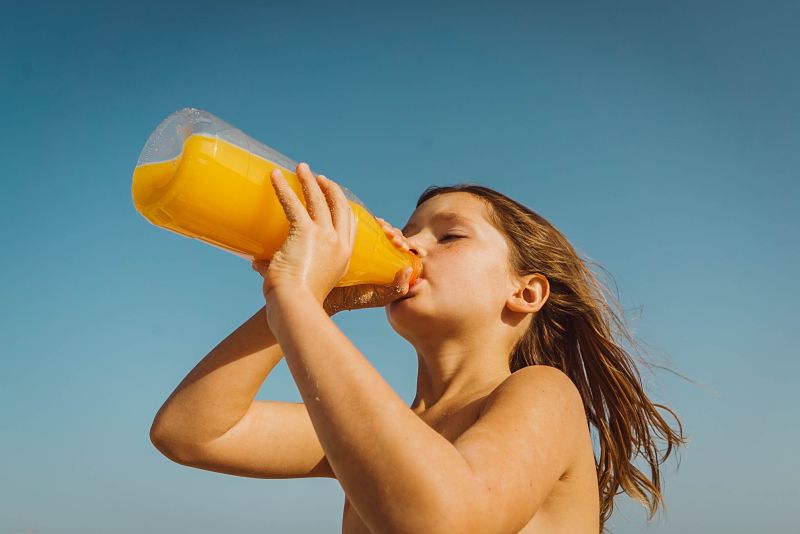
A child’s need for fluids varies somewhat according to age, activity and the climate. Nonetheless, the British Nutrition Foundation recommends that they should be drinking around 6-8 glasses of fluid per day in addition to the water provided in their diet. Remember, the size of the glass increases with age.
It’s important that parents give careful consideration to the hydration of their children. Young children, particularly, actually have a higher proportion of water in their bodies than adults. They are also generally less able to adapt to changes in heat due to differences in their sweat processes, so it’s easier for a child to become dehydrated than an adult, especially if they are active.
The good news is that with a few tricks up your sleeve, it’s possible to keep your child hydrated without too much difficulty. Here are our top tips:
1. Pack the bottle
If you’ve been on the parenting block for a while then this one is old news. Invest in a couple of good quality water bottles and always keep one with your child. Getting a child used to having their water on hand will get them in the habit of taking responsibility for their own drinks. On hot days take frozen bottles of water out. By later in the day you will still have cool fresh water on offer.
2. Consider diet
By choosing to add plenty of fruit and high-water content veg (such as cucumber and tomatoes) to their plates, you can sneak in water without the boredom factor. Always accompany meals and snacks with the availability of water. This is particularly important if you know that your child has got sport, activity or a hot day ahead of them.
3. Offer and remind regularly
Don’t rely on your child to pipe up when they are thirsty. Chances are by the time they notice you’ve either got drama on your hands, or they are already suffering from a dehydration headache. Instead, offer drinks regularly and remind them to drink at least as often as you do.
4. Get ice in on the action
Kids seem to be drawn to ice in the same way they are drawn to mud. Use it to your advantage. On particularly hot days let them know they can suck on an ice cube just for fun! This is best for over 5s due to the risk of choking, but younger ones will love munching on crushed ice. You can also make your own ice lollies using diluted fruit juice or cordial. The kids will love joining in with making them too.
5. Add some flavour
Whilst generally you want to make sure your child’s main drink is water due to sugar content and their teeth, sometimes packing in some flavour will help to get the quantity in that they need.
6. Look at the labelling
Caffeine has a diuretic effect, meaning that it will speed up the dehydration process. Take a look at the labels on drinks such as energy and sports drinks to check they don’t have caffeine in them before offering them to a child.
7. Make it a habit
As your child grows up you won’t be able to monitor or encourage their water intake in quite the same way. That’s why it’s essential to start forming healthy hydration habits from an early age. This way your child will automatically be able to take charge of their own hydration once they are older and going to places without you, such as sports fixtures or holiday clubs. If your little one needs extra encouragement then reward charts for drinking enough can work well.
With these tips, you can ensure your child sails through an active summer without becoming hydrated. Do keep an eye out for signs of dehydration if you are getting concerned. These include strong-coloured urine, lethargy, headaches and dizziness. Get your child into the shade and cool, and get them drinking again.


